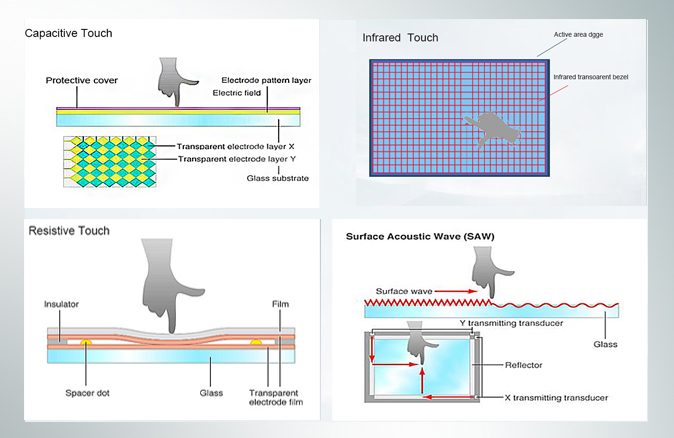With the growth of smart devices, the application of touchscreens is getting closer and closer to our life. Various electronic devices, vehicle tools, daily entertainment equipment, shopping navigation equipment, etc., and the LCD touchscreen has already been integrated into our daily life. When we meet various touch technologies and choose a device with a touchscreen, many questions often arise. What are the advantages of touch displays, and how to choose a better one? Today I will show you a brief introduction to 5 common types of touch screens, as well as their advantages and disadvantages.
According to the touch principle, touch screens can be divided into five basic types: capacitive touchscreens, resistive touchscreens, infrared technology touchscreens, surface acoustic wave technology touchscreens, and low electromagnetic guidance touchscreens. In fact, there are four types of touch screens that we often come into contact with at present, they are resistive touch, capacitive touch, infrared and surface acoustic wave touch. We mainly introduce the differences between these 4 types of touch displays.
1: Capacitive Touchscreen
The technology of the capacitive touch is inseparable from the human body. It needs the mutual induction of the human body current and the ITO conductive layer to work.
First of all, the capacitive touch has 4 layers of glass. The inner surface of the glass and the interlayer are each coated with a layer of ITO. The outermost layer is a protective layer of silica glass. The interlayer ITO coating is used as the working surface, and the electrodes are respectively drawn out from the four corners. when there is a touch with the human body, the finger and the working surface form a current, and the current flows out from the electrodes on the four corners of the touch screen, and the electrodes can sense the change of the surface charge and then determine the coordinates of the touch point. Capacitive touchscreens require only touch, not pressure.
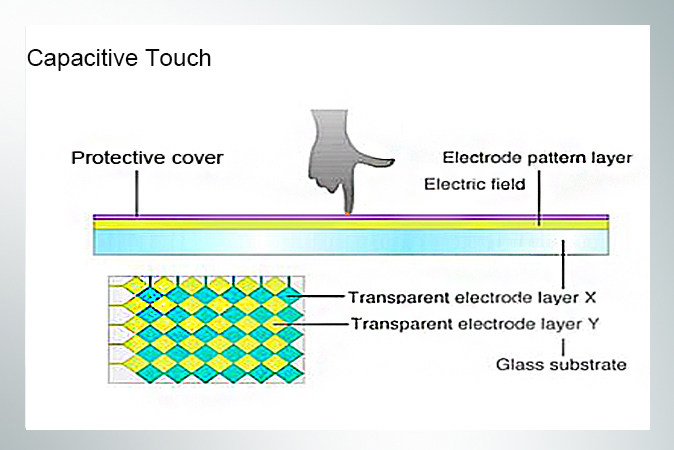
Pros of Capacitive Touchscreen
1. The capacitive touch has fewer corrections working after production, which can improve work efficiency and reduce the generation of defective products;
2. Long working life;
3. Light transmittance and clarity are better than the resistive touchscreen;
4. Capacitive touch is easy to design on large-size LCD display and the cost is relatively low;
5. Can support multi-touch technology.
Cons of Capacitive Touchscreens
1. When a large-area palm or a handheld conductor is close to the capacitive touch display, even if there is no touch on the screen panel, it can also cause a touch action on the display panel;
2. For objects such as wearing gloves or holding an insulating object, the touch does not work, because the insulation medium is added, and the touch point will move;
2. The light transmittance of the capacitive touch screen is not uniform, and there is a problem with color distortion. Due to the reflection of light between the layers, the image characters will be blurred;
4. When the ambient temperature and humidity change, it will cause the capacitive touch point to move and the touch will be inaccurate.
2: Resistive Touchscreen
A resistive touchscreen is a type of touchscreen that uses pressure sensing for control.
It uses two layers of ITO (Indium Tin Oxide) plastic film (ITO+Glass) coated with conductive function. The side of adjacent to the film and glass are all coated with ITO coating. When there is no pressure, there is a gap between the two layers of ITO, and the certain gap is in a non-conductive state. When there is pressure, whether it is human finger pressure or object pressure, the two ITO layers will contact to form a current signal, and then convert the corresponding pressure point by detecting the X-axis and Y-axis voltage changes to complete the touch processing of the entire screen mechanism.
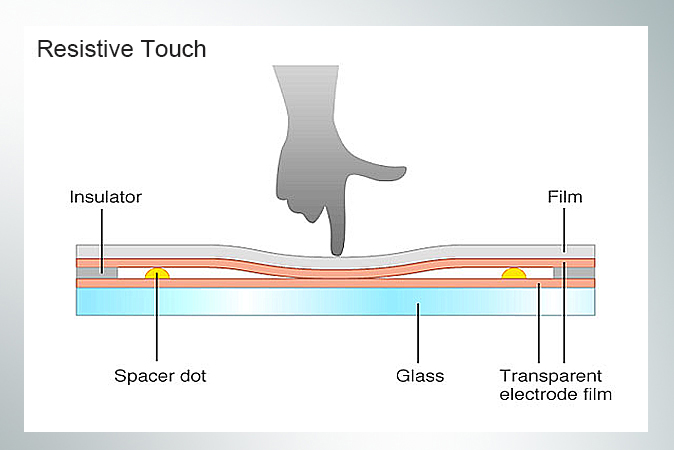
Pros of Resistive Touchscreens
1. Mature technology, low cost;
2. Good environmental adaptability, no worry about the influence of dust, water vapor and oil pollution;
3. Good stability, both the human body and objects can be touched;
4. The precision of the resistive touch screen is high; it is easy to design on a large resolution LCD screen;
Cons of Resistive Touchscreens
1. The touchscreen is easily scratched and the makes the touch is unavailable;
2. Poor light transmission, easy to increase battery consumption;
3. When multi-touch is used, due to unbalanced pressure, the tactility is not good, and the touch point will be incorrect;
4. Relatively low touch sensitivity.
Click this to check the Difference Between Resistive Touchscreen and Capacitive Touchscreen.
3: Infrared Touchscreen
The infrared touchscreen is easy to install, just add a light spot distance frame on the LCD display panel, no need to coat any IoT. The infrared touch display uses the dense infrared matrix in the X and Y directions to detect and locate the touch point. When the user touches the screen, the touching object will block the two horizontal and vertical infrared rays passing through the position, so as to obtain the position of the touch point to realize the touch. Any touching object can change the infrared rays on the contacts to realize the touch screen operation.
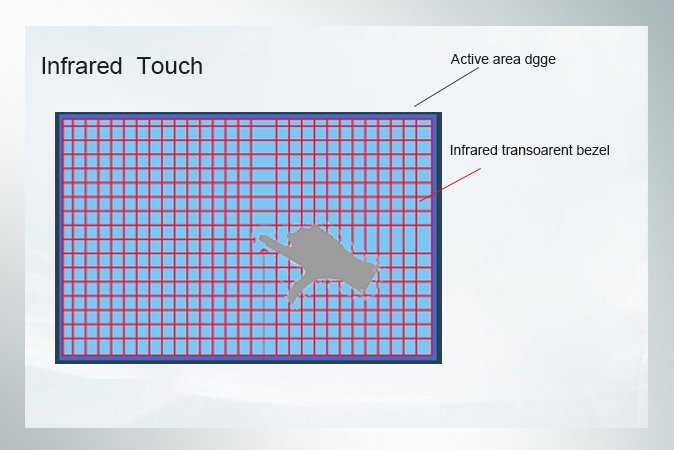
Pros of Infrared Touchscreen
1. The infrared touchscreen is not affected by the current, voltage and static electricity;
2. Low price, easy installation, no need for any controller;
3. Compatible with computers of various grades.
Cons of Infrared Touchscreen
1. Difficult to use on large size LCD screens;
2. Easily disturbed by external light,
3. The infrared touch screen is not waterproof or oil-proof, and any small foreign objects will cause errors and affect its performance.
4. Surface Acoustic Wave Touchscreen
The touch screen part surface of acoustic wave touch can be in a flat, spherical or cylindrical glass plate, a piece of glass installed in front of the CRT, LED, LCD or plasma display screen. This glass has been strengthened and specially treated, and it is installed on the surface of the display. Vertical and horizontal ultrasonic senders are installed on the upper left and lower right corners of the glass, and ultrasonic receivers are installed in the upper right and low left corners. when the finger touches the glass surface, the finger absorbs part of the sound wave energy, the controller records this anomaly and calculates the position of the touch point.
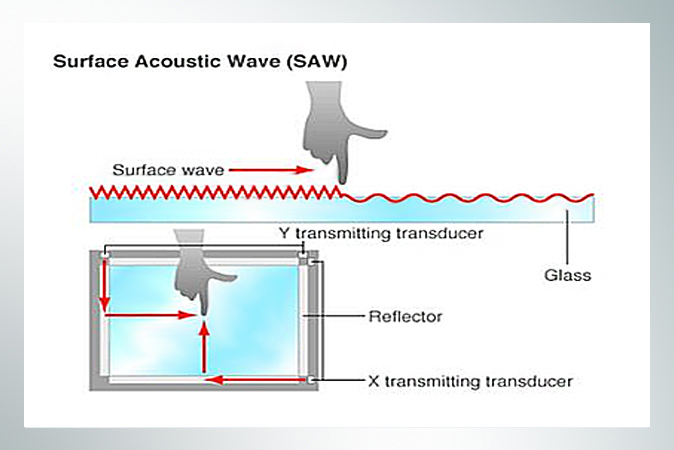
Pros Surface Acoustic Wave Touchscreen
1. High clarity and good light transmittance.
2. Highly durable, good scratch resistance and responsive.
3. Not affected by environmental factors such as temperature and humidity, high resolution, and long prolife;
4. High light transmittance, can maintain clear and bright image quality;
Cons of Surface Acoustic Wave Touchscreen
1. Applicable to smaller screens, hard to use on larger screens more than 30 inches;
2. Susceptible to moisture damage, so not suitable for many industrial and commercial applications;
3. Dirty surfaces can cause dark spots on the screen and require regular cleaning
RJOYTEK LCD TOUCH SOLUTION
Introduced so much knowledge about touchscreens, we provide customers with personalized LCD TFT display solutions, we provide different touch technology TFT LCD panel customization according to customer requirements, and design touch solutions that meet the requirements according to user application scenarios, such as different material glove touch, water environment touch, saltwater environment touch, hover touch, 3D (force) touch, haptic touch, etc. Orient Display can also provide very low cost fixed area button touch, single (one) finger touch, double finger (one finger+ one gesture) touch, 5 finger touch, 10 points touch or even 16 points touch.
Anything help you need, please contact us!
If you need to check more TFT LCD touchscreen panel, welcome to visit our ALIBABA SHOP and talk with us online!
RJOYTEK LCD DISPLAY PANEL
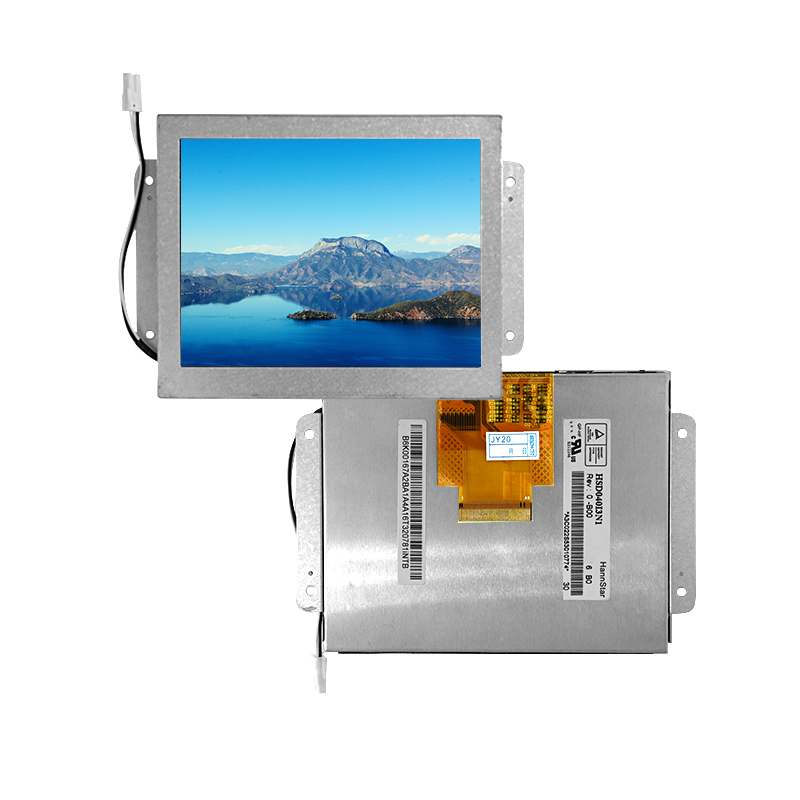 |
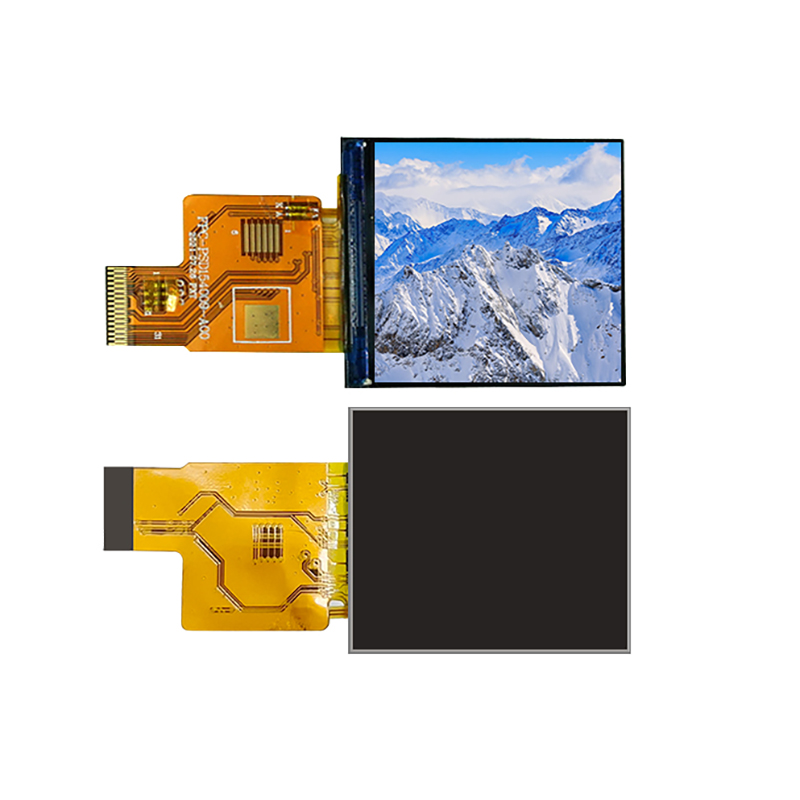 |
 |
| Sunlight Readable LCD Display | TFT LCD Screen Panel | Round LCD Display Module |

